
Coral Pink Sand Dunes State Park, Utah.
Part 9. Sand Dunes
| North America doesn't have extensive sand deserts,
but relatively small areas of sand dunes are scattered throughout the West, from
Alaska to Mexico. Some of them are a bit unusual. |
 |
 |
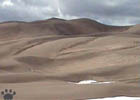 |
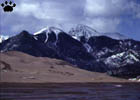 |
| Great Sand Dunes National Monument,
Colorado. |

Great Sand Dunes. |
Great Sand Dunes National Monument is an extensive
area of sand located among high mountains and dense forests. These dunes look
striped in early spring, when the snow cover is melting. |
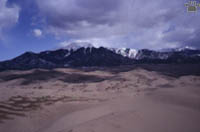
Great Sand Dunes, Colorado. |
 |
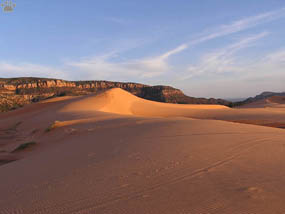 |
| Coral Pink Sand Dunes State Park,
Utah. |
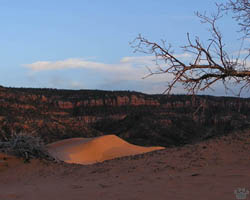
Coral Pink Sand Dunes. |
Coral Pink Sand Dunes State Park, Utah, is one
of the most beautiful areas of moving sand. |
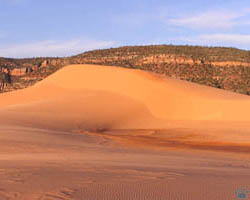
Coral Pink Sand Dunes. |
 |
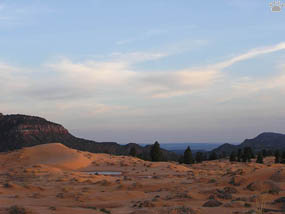 |
| Coral Pink Sand Dunes State Park,
Utah. |
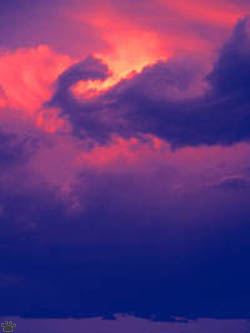
Storm over White Sands National Monument, New Mexico. |
Formally protected, it is being used for ORVing,
which slowly destroys this fragile wonder, its unique plants and animals. That's
the sad fate of many sand dunes in the USA. |
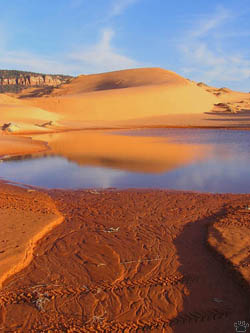
Coral Pink Sand Dunes. |

Tracks of Ord's kangaroo rat
(Dipodomys ordii), CPSDSP. |
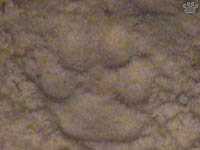
Track of kit fox (Vulpes velox),
Sand Mountain, Nevada. |

Praying mantis, Imperial Sand
Dunes, California. |

Joined alligator juniper (Juniperus deppeana) and
pinyon (Pinus edulis), Zuni Sands, New Mexico. |
Almost every one of these isolated areas of sand
has endemic plants and animals. Evening-primroses (Oenothera) and tiger
beetles are particularly prone to evolving into endemic forms on sand dunes. Other
interesting animals include fringe-toed lizards (Uma), sidewinder rattlesnakes
(Crotalus cerastes), darkling beetles, and pocket mice (Perognathus). |
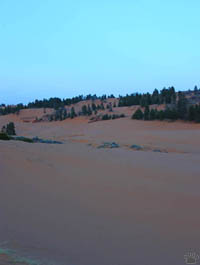
Coral Pink Sand Dunes are advancing on one
side, and being colonized by trees on the other. |

Small isolated dune, Kelso Dunes, California. |
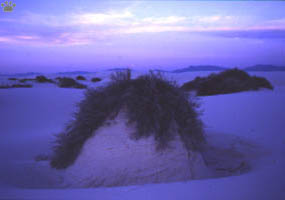
Evening, White Sands National Monument, New Mexico. |
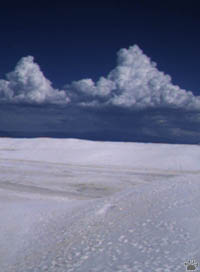
White Sands National Monument, New Mexico. |
Probably the most beautiful of all dunes in North
America are in White Sands National Monument, New Mexico. It is an extensive area
of brilliant white gypsum sand, with four different types of sand dunes. It is
closed for ORVing, but threatened by herds of introduced oryx antelopes (Oryx
gazella) from Africa. Here are two photos of a tornado
over White Sands. |
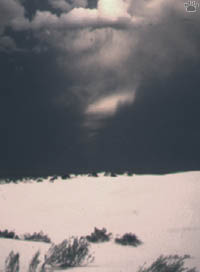
Tornadic thunderstorm over White Sands. |
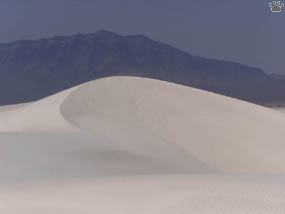 |
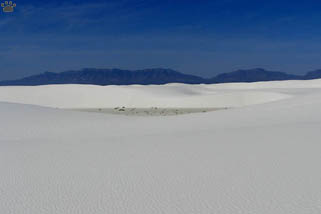 |
| White Sands National Monument, New
Mexico. |

Sand pyramid, White Sands National Monument. |
A unique feature of White Sands are giant sand
pyramids, up to 33 m/100' tall, in places where long roots of desert shrubs have
prevented the sand from being blown away. |
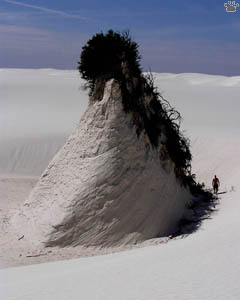
Sand pyramid, White Sands National Monument. |
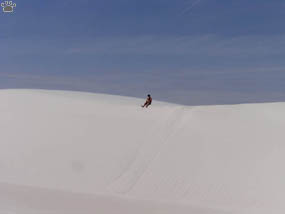 |
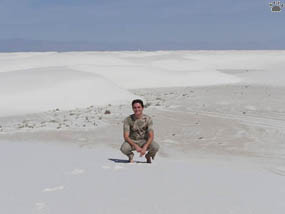 |
| Author at White Sands (photos by Scott Knapp). |
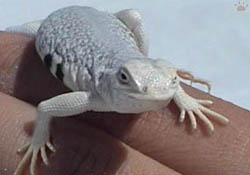
Side-blotched lizard (Uta stansburiana), White Sands. |
White Sands are inhabited by pale- colored mice,
lizards, moths and beetles. |

Side-blotched lizard (Uta stansburiana), White Sands. |
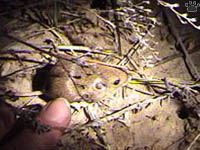
Plains pocket mouse (Perognathus flavescens),
usual coloration, Bitter Lake NWR, New Mexico. |
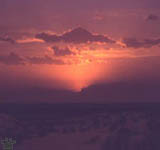
Sunset, White Sands National
Monument, New Mexico. |
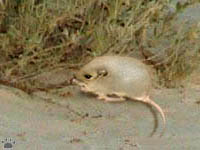
Plains pocket mouse, White Sands National,
Monument, New Mexico. |
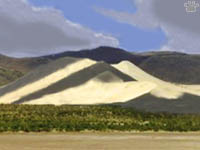
Sand Mountain, Nevada. |
Sand Mountain in Nevada is the tallest sand dune
in North America (150 m high). It used to be a great place to listen to "booming
sands", but now it, too, has been mostly converted into a noisy ORV playground. |
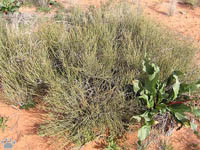
Mormon tea (Ephedra viridis), CPSDSP. |
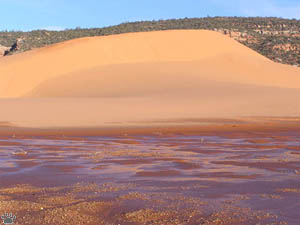
Coral Pink Sand Dunes, Utah.
Part 10. El Malpais
Back to Part 8
Home
|
|